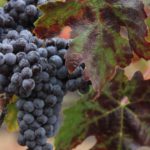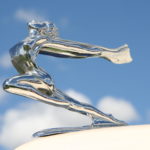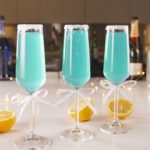This is not your Grandma’s Riesling
Spring is always the most exciting time of the year. Warm weather abounds, grass is growing, flowers are blooming, patios, barbeques and the need to be outdoors overwhelming. As a wine lover, it’s time to give those big comfort reds a break and bring out the refreshing wines of Springtime.
Over the past few years, many wine enthusiasts have gravitated to the ever growing category of Rose wines. Bravo! I have waited for this trend to kick in for years. The selection of quality Roses has grown tenfold. Winemakers from all over the globe, from France to Australia, South Africa to Italy and even here in the good ole USA, have embraced “The New Pink”. In doing so, they have initiated many more young drinkers to enjoy wine on a regular basis.
However, one old segment that has lost a little momentum over the past decade is the Riesling varietal. Once the most popular white wine in the world, it has seen better times. Not because of inferior quality or a dislike of the grape itself, rather for the fact that there so many more exciting new white wine varietals on the market. Gavi, Vinho Verde, Vernaccia, Sancerre, Viognier and Prosecco are to name but a few of the numerous choices consumers now have an option to purchase. I strongly believe that now may be your best opportunity to revisit the broad array of excellent Riesling wines produced from around the world.
There once was a time when you thought Riesling, you thought Germany. Sweet, sweeter and darn near pure sugar. That was your grandma’s Riesling. This is no longer the case. Being a relatively easy grape to grow and harvest, vineyard plantings of the grape can now be found in every corner of the globe. The only thing that has changed is the unique styling’s in which the winemaker chooses to show his/her particular offering.
Riesling is a perfect wine for the spring and summer months. They are usually lighter in style, delivering notes of aromatic fruit associated with warm weather. They run the gamut of peach, apricot, pear, crisp apple, nectarine and strong hints of honey. Its high acidity also allows aromas of honeycomb, jasmine, lime and lemon to shine.
To this day, if a stereotype exists, this wine bears the full brunt. Mention the word Riesling and the majority of consumers will still associate this wine with one simple word: sweet. Traditionally, many Rieslings imported ended up in that spectrum. I remember years ago, I was invited to Germany to serve as a judge during a week’s worth of tastings throughout the region. It turned out to be nothing like I had expected. The majority of wines I was sampling leaned toward the dry side, fragrant and luscious. There was some that revealed different levels of sweetness but I came home thinking that German winemakers were keeping the good stuff for themselves and shipping the rejects to our homeland.
Rieslings origins can be traced back to medieval Germany. For hundreds of years it was referred to as Riefingen. Historians believe its birthplace was either along the Rhine river, or the then Alsace region of Germany. Experts have come to insist that the best Rieslings are grown along the Mosel river. Though they possess more vineyard acreage of the Riesling grape, countries including Australia, Hungary, France, Austria, New Zealand and nearly every US state in the union are growing some form of hybrid of this grape varietal.
The most disheartening, and to this day one of the reasons wine lovers shy away from trying Riesling wines is because they cannot understand the language on its labels.To better understand labeling that may appear on a German Riesling, let us define them in the simplest of terms. There are 2 different classifications: Qualitatsweine, or quality wine from one of 13 specific regions, and Pradikatsweine, meaning superior quality wine, which are selected from 39 subregions of the 13 growing regions.
There are 6 separate superior quality designations that you will see listed on the label. These words will always lead you in the right direction when choosing a specific Riesling.
Kabinett style Riesling will be on the drier side, retaining the least amount of residual sugar.
Spatlese refers to late picking during the harvest. The can be off-dry to slightly sweet depending on the style the winemaker opts towards.
Auslese means select harvest, riper grapes that are hand harvested in clusters. They tend to be sweeter and richer then the above mentioned styles.
Beerenauslese means select berry harvest, picked at the first frost of the season when the grape clusters achieve noble rot. This style of Riesling is best served as a dessert wine where its exotic flavors show best.
Trockenbeerenauslese is translated to be “dry berry picking”. It’s a late harvest selection allowing the grapes to shrivel on the vines, concentrating their sugar levels to the highest degree.
Eiswein or Ice Wine, is the most famous dessert wine produced in Germany. Its concentrated grapes are frozen on the vine and then pressed to produce a low yield ultra rich wine. When purchasing a bottle of true German Eiswein, notice on the label these words: Trocken meaning (Dry) and Halbtrocken meaning (Half-Dry or Off-Dry).
When it comes to the 3 most popular selection levels of Riesling, that being Kabinett, Spatlese and Auslese, the easiest way I inform consumers on how to remember the separate levels of sweetness is by this simple rule. Think of a coffee and adding 1, 2 or 3 lumps of sugar. Kabinett being one lump, Spatlese being two lumps and Auslese being three lumps. If you can retain this rule of thumb, you will always know what desired ratio of sweetness you can expect from that particular bottle.
When it comes to Riesling produced outside of Germany, label designations are much more plain and simple. They will tell you up front if they are dry, semi-sweet, select harvest which means a bit sweeter or late harvest which means very sweet.
You can experience a wide range of pricing when it comes to Riesling wines. Expect to pay under $10 for everyday table wines, slightly more per each bottle when it comes to the rising levels of quality. When it comes to single vineyard designation and dessert category selections, you may feel like you are paying a second payment on your mortgage. As with any wine, it all boils down to what you enjoy and the price you are willing to pay.
With this all being said, we certainly hope that you might reconsider taking the leap of faith into once again enjoying the wonderful exotic and seductive flavors Riesling has to offer. Juicy, elegant and refreshing, what better wine to welcome in the Spring season.



